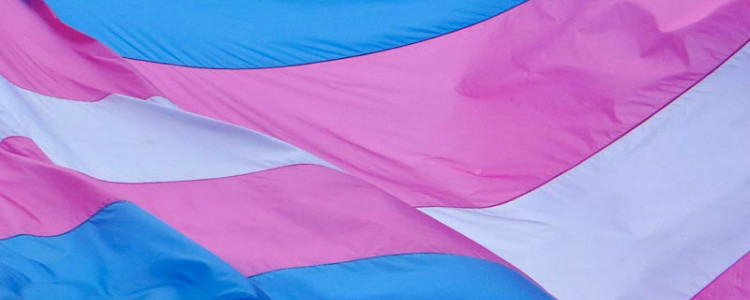Shining a Light on Gender Identity and Eating Disorders
June is Pride Month, a time to celebrate the successes and gifts of lesbian, gay, bisexual, transgender, and queer (LGBTQ) communities. As this month of celebration comes to a close it is the perfect time to reflect on the next steps if we want to keep making our world a safer, more just place for LGBTQ people. One important set of next steps is to build awareness and action related to eating disorders prevention among the most marginalized LGBTQ communities, including transgender and gender diverse people.
From a public health perspective, there is a lot we don’t yet know about the links between gender identity and eating disorders prevention. Below are three reasons why this should be a top priority topic for the coming year and beyond.
What is gender identity, anyway?
Gender identity refers to a person’s internal sense of themselves as male, female, neither of these, both, or another gender. This is about how we feel in our hearts and our minds.
• The term transgender refers to a person whose gender identity does not match the sex they were assigned when they were born (for example, someone assigned a female sex at birth who identifies as a man or as another gender).
• Cisgender refers to a person whose gender identity matches the sex they were assigned at birth (for example, someone assigned a female sex at birth who identifies as a woman).
Keep in mind that people use many different terms to describe their gender identity, so not everyone will use the definitions above. To learn more about these terms—and see some fun graphics, including a big purple gender unicorn!—check out Trans Student Educational Resources.
Three reasons we need to focus on gender identity and eating disorders prevention:
1. Transgender communities face substantial health inequities—including eating disorders risk.
Until about four years ago, public health researchers knew next to nothing about how common eating disorders might be in transgender populations. We still know very little, but some recent studies are sounding the alarm bell. For example, a survey of nearly 300,000 college students found that transgender college students had over four times greater risk of having been diagnosed with anorexia nervosa or bulimia nervosa, and two times greater risk of eating disorder symptoms such as purging compared to their cisgender female peers [1].
A few other studies have now found similar patterns with transgender youth or adults at high risk for eating disorders [2,3]. Although more data from epidemiologic studies is greatly needed, we know enough to say that this is an area needing urgent attention.
2. Transgender health inequities are not inevitable—and should be prevented.
In public health, we call these differences in risk health inequities because they arise out of injustice and are therefore preventable. Transgender people often experience stigma and discrimination based solely on their actual or perceived gender identity [4], and this is at the root of many health inequities. Stigma may be an important component of eating disorders risk as well [5]. For example:
• A study of transgender Canadian youth found that youth who experienced more frequent harassment and discrimination were more likely to have eating disorder symptoms, while those who could draw on protective resources (like supportive schools and caring friends) were less likely [6].
• Lack of needed health care can increase body dissatisfaction and eating disorders risk. Transgender people often face barriers to receiving gender affirming health care (for example, hormone therapy)—barriers such as insurance discrimination or verbal harassment in healthcare settings. In a major study, one-third of transgender respondents had at least one negative experience with a healthcare provider related to being transgender…in the past year alone [4].
• On the flip side, a recent study found that transgender individuals who received gender affirming medical interventions had improved body satisfaction and lower eating disorders symptoms [7].
Of course, not all transgender individuals are interested in medical interventions; still, these studies suggest that it may be possible to actually reduce eating disorders risk—and health inequities—by increasing access to needed health care.
3. Work on gender identity and eating disorders can build on many existing strengths.
The third reason to focus on gender identity and eating disorders is that…the work has already begun! Transgender communities have always shown tremendous strength and resilience in the face of many societal challenges. As advocacy for transgender rights grows, work related to gender identity and eating disorders has also begun to blossom. For one thing, research in this area is growing. This will help public health folks better understand who is most at risk and how we should focus interventions. In terms of eating disorders treatment, many clinicians and providers are seeking out training and thinking about ways to better serve their transgender clients. Most importantly, new resources are being created by and for transgender communities, such as organizations like Fighting Eating Disorders in Underrepresented Populations (FEDUP).
There is much work to be done. One step forward is to continue having conversations about the importance of addressing gender diversity in any eating disorders prevention effort. Another step is to get involved in ongoing advocacy for overall transgender health and human rights—and to bring eating disorders expertise to these conversations. Check out the National Center for Transgender Equality and the National LGBTQ Task Force to learn more about current campaigns.
By Pride Month next year, let’s be able to say that we’ve made progress toward understanding and improving eating disorders prevention for those of all genders.
Allegra Gordon, ScD, MPH is a social epidemiologist and postdoctoral research fellow at Boston Children’s Hospital and Harvard Medical School. Her research addresses the mental and physical health impacts of discrimination and gender norms, with a particular focus on body image and eating disorders in LGBTQ youth and young adults. She is a member of the Harvard Strategic Training Initiative for the Prevention of Eating Disorders and the Sexual Orientation, Gender Identity and Expression Working Group at Harvard T.H. Chan School of Public Health.
REFERENCES
Diemer EW, Grant JD, Munn-Chernoff MA, Patterson DA, Duncan AE. Gender Identity, Sexual Orientation, and Eating-Related Pathology in a National Sample of College Students. J Adolesc Health Off Publ Soc Adolesc Med. 2015;57(2):144-149. doi:10.1016/j.jadohealth.2015.03.003.
Guss CE, Williams DN, Reisner SL, Austin SB, Katz-Wise SL. Disordered Weight Management Behaviors, Nonprescription Steroid Use, and Weight Perception in Transgender Youth. J Adolesc Health Off Publ Soc Adolesc Med. 2017;60(1):17-22. doi:10.1016/j.jadohealth.2016.08.027.
Jones BA, Haycraft E, Murjan S, Arcelus J. Body dissatisfaction and disordered eating in trans people: A systematic review of the literature. Int Rev Psychiatry Abingdon Engl. 2016;28(1):81-94. doi:10.3109/09540261.2015.1089217.
James SE, Herman JL, Rankin S, Keisling M, Mottet LA, Anafi M. The Report of the 2015 U.S. Transgender Survey. Washington, D.C.: National Center for Transgender Equality; 2016. Accessed December 9, 2016.
Gordon AR, Austin SB, Krieger N, White Hughto JM, Reisner SL. “I have to constantly prove to myself, to people, that I fit the bill”: Perspectives on weight and shape control behaviors among low-income, ethnically diverse young transgender women. Soc Sci Med. 2016;165:141-149. doi:10.1016/j.socscimed.2016.07.038.
Watson RJ, Veale JF, Saewyc EM. Disordered eating behaviors among transgender youth: Probability profiles from risk and protective factors. Int J Eat Disord. November 2016. doi:10.1002/eat.22627.
Testa RJ, Rider GN, Haug NA, Balsam KF. Gender Confirming Medical Interventions and Eating Disorder Symptoms Among Transgender Individuals. Health Psychol Off J Div Health Psychol Am Psychol Assoc. April 2017. doi:10.1037/hea0000497.





